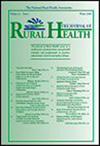Financial performance of rural and urban nursing homes: A comparative analysis
Abstract
Purpose
The financial sustainability of nursing homes is increasingly critical as the aging US population continues to grow. Rural facilities often encounter more significant economic challenges than urban counterparts. This study investigates the disparities in financial performance between rural and urban nursing homes in the United States, emphasizing the influence of organizational and environmental factors. A comprehensive understanding of these differences is necessary for the implementation of effective policy and management interventions.
Methods
The study used a longitudinal dataset (2018–2022) comprising 66,056 nursing home-year observations. Data sources included Centers for Medicare and Medicaid Services (CMS) Cost Reports, Payroll-Based Journal, Care Compare, LTCFocus, and the Area Health Resource File. The dependent variable was the operating margin. The primary independent variable, geographic location, was classified using Rural–Urban Commuting Area (RUCA) codes. We conducted multivariable linear regression with facility-level random effects and two-way fixed effects (state and year) to assess rural–urban financial disparities while controlling for organizational and environmental factors and the impact of COVID-19.
Findings
Rural nursing homes had lower operating margins than urban facilities in unadjusted models. However, after adjusting for organizational factors such as size, occupancy, and payer mix, the rural–urban difference was no longer significant. Environmental factors, including population demographics and income levels, contributed to financial disparities. COVID-19 exacerbated financial challenges, disproportionately affecting rural facilities.
Conclusions
Financial disparities between rural and urban nursing homes are not solely due to geographical location, but also stem from structural challenges. These insights have significant policy implications suggesting that addressing reimbursement rates, operational efficiency, and resource allocation is crucial to ensure the financial sustainability and quality care for aging populations.


 求助内容:
求助内容: 应助结果提醒方式:
应助结果提醒方式:


